Last Chance to Catch NYC's Holiday Notalgia Train
We met the voices of the NYC subway on our nostalgia ride this weekend!



Dakota Apartments, 1890. Image via The Library of Congress
It is difficult to imagine a desolate Central Park West without neighboring skyscrapers, bustling taxi cabs, and lots of New Yorkers, but back in the 1890s, it was just that. In fact, the Dakota, located at 1 West 72nd Street and Central Park West, is rumored to have gotten its name because Manhattan’s Upper West Side appeared as empty as the Dakota Territory. Another theory suggests that Edward Clark, former president of the Singer Sewing Machine Company and building developer, chose the name Dakota because of his affection for the western states. A statue of a Dakota Indian standing above the 72nd Street entrance lends support to this idea.
No matter how it got its name, Clark and architect Henry Janeway Hardenbergh, who would go on to design the Plaza Hotel, still had to find a way to attract New Yorkers to move to the remote area. With its unique layout and blend of architectural styles, the resulting building unreservedly accomplished this mission and today remains one of the most sought-after addresses in the city.
Clark and Hardenbergh decided to market an unheard-of fancy lifestyle along with the newly-constructed building. Before the Dakota, New Yorkers lived in houses with their servants because apartments were associated with poor, cramped conditions not suitable for the wealthy. With this building, New Yorkers had the opportunity to rent flats with all of the amenities of a hotel. Tenants could either eat in the full-service dining room or have meals delivered to their room. The other original amenities were a playroom and gym on the 10th floor and a tennis and croquet court behind the building. Instead of servants, the Dakota had a full housekeeping staff, including maids, janitors, laundresses, and elevator operators. The staff’s responsibilities ranged from delivering coal and firewood to apartments’ stoves and fireplaces and then hauling away the ashes. The staff was so extensive that Hardenbergh designated the top two floors as housekeepers’ quarters. This lifestyle must have quickly appealed to New Yorkers, because within no time the Dakota was completely occupied.
The building itself is unique in that it combines two architectural styles: North German Renaissance and French. The German exterior includes a grand, 20 foot tall, arched and covered entryway that sheltered tenants as they disembarked from their horse-drawn carriages. There are three other entrances that also all connect to the private courtyard.
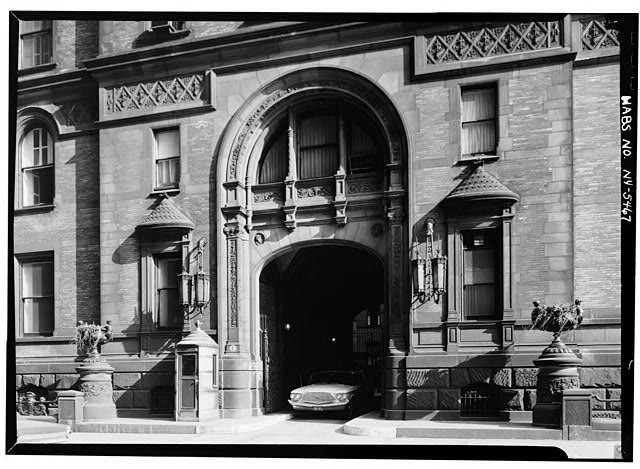
Entrance Detail, 1965. Image via The Library of Congress.
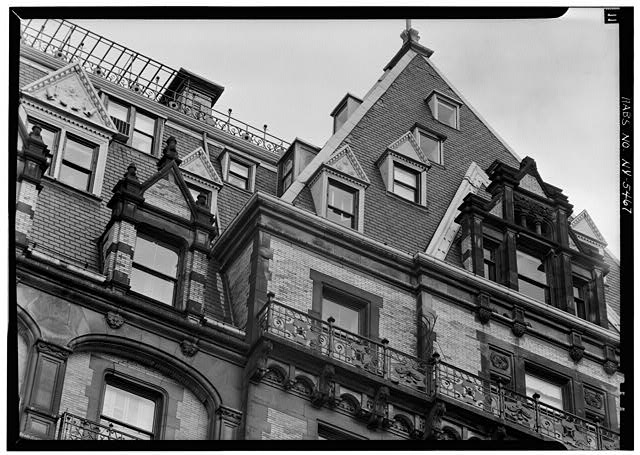
East Roof Detail, 1965. Image via The Library of Congress
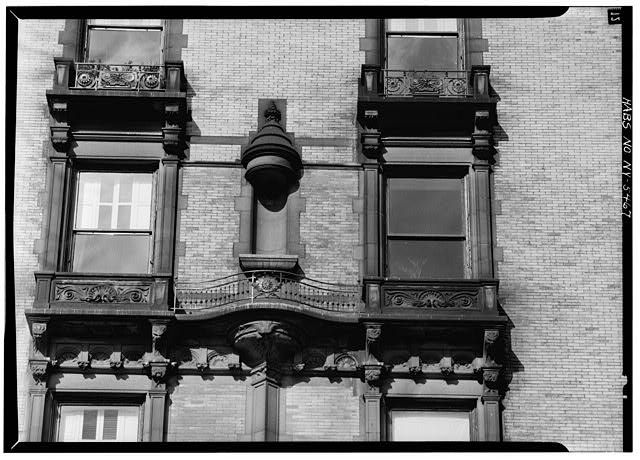
East Facade Window Detail, 1965. Image via The Library of Congress
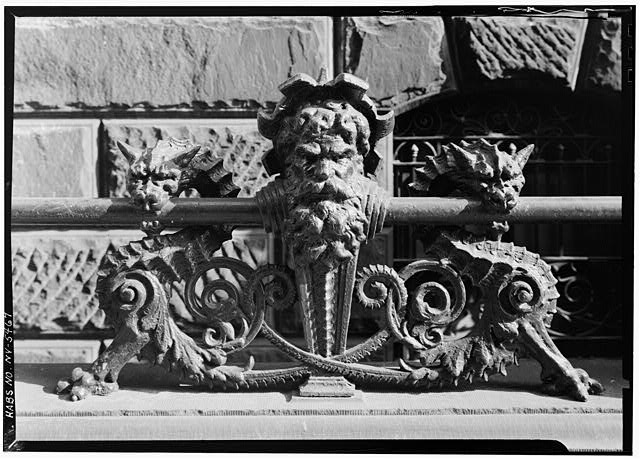
Fence Detail, 1965. Image via The Library of Congress.
The French-style interior is unlike the interior of other New York City apartment buildings. When it was first built, none of the 65 apartments, ranging from four to 20 rooms, had the same floor plan. Some of the rooms in the residencies are up to 50 feet long, and most have 14-foot-high ceilings. One similarity is that originally the master bedrooms and parlors look out towards the street while the kitchen and remaining rooms look out towards the courtyard.
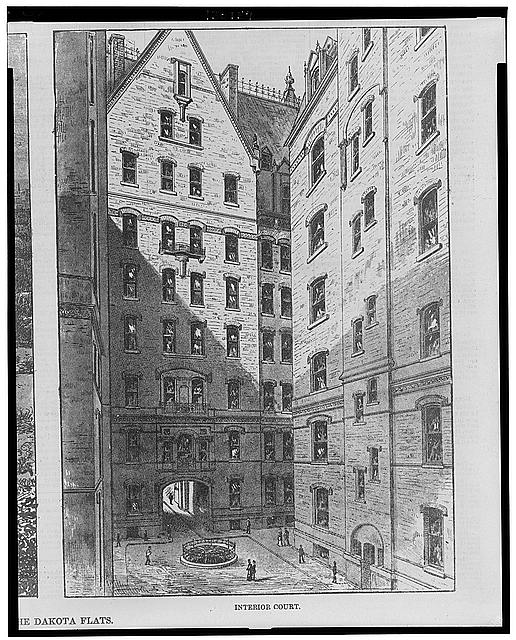
Image via The Library of Congress
Unlike many of New York City’s older buildings, the building has largely remained how Clark and Hardenbergh intended, aside from some modern renovations and the switch from rent to cooperative housing. The Landmarks Preservation Commission designated the Dakota as a historical landmark in 1966. Seven years later, it became the home of John Lennon and his wife, Yoko Ono, and was the site of his unfortunate assassination in 1980. Ono still owns an apartment in the building.
While meals are no longer delivered to apartments, the Dakota remains one of the most exclusive addresses in the city, home at some point to luminaries like Judy Garland, Lauren Bacall, Connie Chung, and John Madden. Currently, the average list price for one of the 94 magnificent apartments is $10,750,000. The process to residency, which ultimately ends in approval by the Dakota’s board, is extremely long-winded and costs thousands of dollars. Modern-day residents are still subject to a book of strict etiquette rules; for example, tenants must ride the service elevator when they have luggage or lots of baggage and only vehicles belonging to tenants can pass through the entryway. Even then, they cannot dawdle in the courtyard for more than ten minutes. But for some well-off New Yorkers, dealing with these rules is well worth living in a spacious apartment with a stunning view of Central Park West.
Subscribe to our newsletter